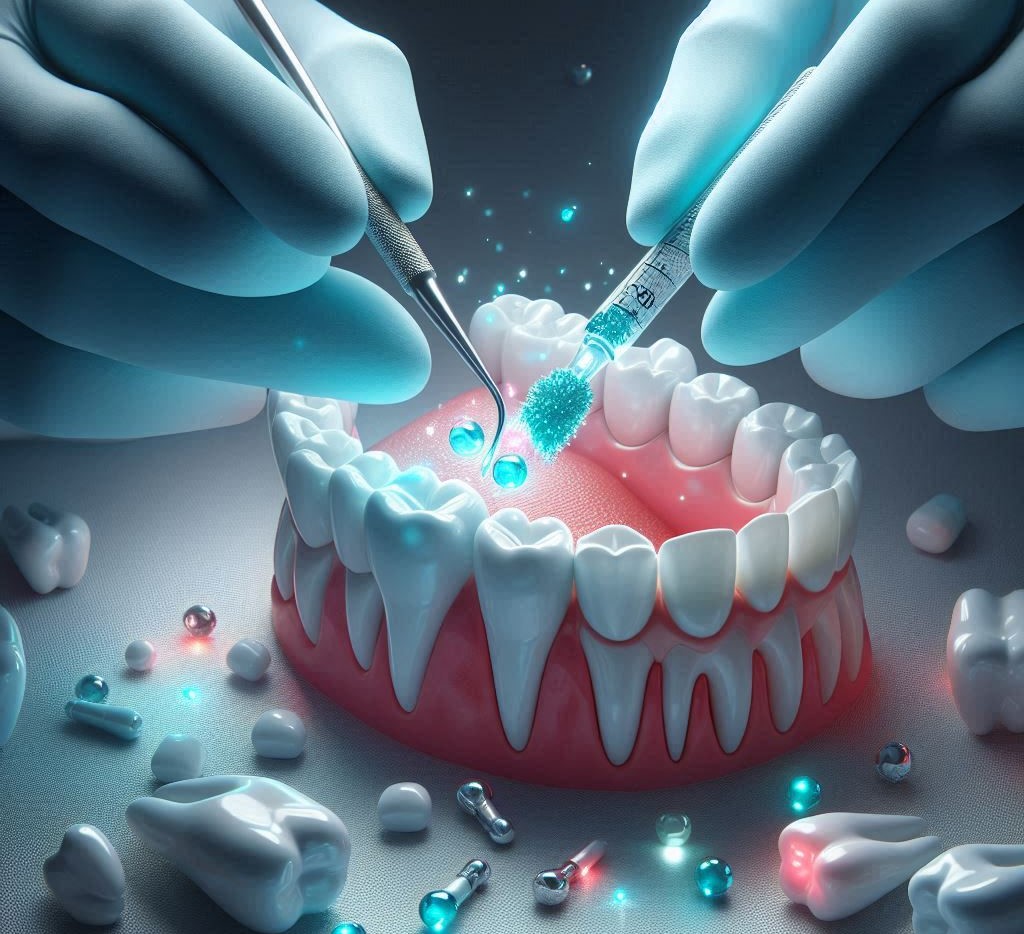Tooth sensitivity remains one of the most common complaints encountered in dental practice, with a significant portion of the population experiencing varying degrees of discomfort. This sensitivity, often exacerbated by temperature fluctuations, acidic foods, or mechanical pressure, can severely affect a patient’s ability to maintain optimal oral hygiene and enjoy everyday activities such as eating or drinking. Among the array of treatments available for sensitive teeth, dental fillings are a frequent necessity—especially when cavities or fractures expose the sensitive underlying dentin.
While a wide range of filling materials is available, patients with sensitive teeth require special consideration when choosing a material for dental restoration. The goal is not only to restore tooth function and aesthetics but also to reduce or eliminate the discomfort that characterizes dentin hypersensitivity.
This guide offers an exhaustive examination of the various materials used to fill cavities in sensitive teeth, explores the techniques that minimize discomfort during the procedure, and highlights advances in restorative materials that promise to further alleviate sensitivity.
Understanding Tooth Sensitivity
Causes and Mechanisms
Tooth sensitivity primarily arises from the exposure of dentin, the layer beneath the enamel. Dentin contains numerous microscopic tubules that lead directly to the nerves of the tooth. The most common causes of this exposure include:
- Enamel erosion: This occurs when the protective outer layer of the tooth is worn away, exposing the more porous dentin underneath. Enamel erosion can be caused by a variety of factors such as acidic foods and drinks, excessive brushing, bruxism (teeth grinding), and certain medical conditions like acid reflux.
- Gum recession: Gum tissue can naturally recede with age, or it can be caused by aggressive brushing, periodontal disease, or injury. When the gums recede, the root surfaces of teeth become exposed, which leads to increased sensitivity.
- Tooth decay: Cavities that penetrate through the enamel into the underlying dentin can expose sensitive areas, especially when the decay approaches the pulp (nerve) of the tooth.
- Cracked teeth: A crack in the enamel or dentin can expose the inner structures of the tooth, causing sensitivity.
Risk Factors and Prevalence
Tooth sensitivity affects a broad spectrum of individuals. However, certain factors increase the likelihood of developing this condition:
- Age: Sensitivity tends to peak in individuals between 20 and 40 years of age, as the natural wear and tear on enamel become more pronounced.
- Gender: Women are more likely to experience sensitivity than men, partly due to hormonal fluctuations that can influence oral health.
- Diet: Frequent consumption of acidic foods and drinks, such as citrus fruits, soda, or wine, can accelerate enamel erosion, leading to sensitivity.
- Oral hygiene habits: Both excessive brushing and inadequate brushing can contribute to enamel erosion and gum recession, respectively.
- Genetics: Some individuals are genetically predisposed to thinner enamel or other conditions that may make them more prone to sensitivity.
Effects of Sensitivity on Quality of Life
The discomfort associated with sensitive teeth can negatively impact a person’s daily life. Simple activities such as eating, drinking, and even brushing can become painful and inconvenient. Sensitivity may lead to difficulty consuming hot or cold foods, citrus fruits, or sweets, thus affecting a person’s diet and overall enjoyment of food. Additionally, sensitive teeth may cause individuals to avoid regular dental visits, fearing exacerbation of their discomfort.
Types of Filling Materials for Sensitive Teeth
Now, let’s delve into the specific materials that are most effective for filling sensitive teeth. Each material has distinct properties that can help minimize pain, improve sealing, and ensure long-term comfort.
Resin-based Composites
Resin composites are one of the most commonly used materials for dental fillings. They are favored not only for their excellent aesthetic properties but also for their ability to bond well to the tooth structure.
Composition: Resin composites are composed of a blend of organic resins (such as bisphenol A-glycidyl methacrylate, or Bis-GMA) and inorganic fillers (like silica or glass).
- Advantages:
- Aesthetic appeal: Resin composites can be custom-matched to the natural color of teeth, making them ideal for visible areas.
- Adhesion to tooth structure: The bonding properties of composite resins allow for a more conservative filling, as the material can be directly bonded to the tooth without requiring extensive preparation.
- Thermal insulation: Resin-based composites can help insulate sensitive teeth from temperature fluctuations.
- Considerations for Sensitive Teeth:
- Post-operative sensitivity: Some patients may experience temporary sensitivity after the placement of composite fillings, particularly due to the polymerization process. The rapid hardening of the resin material can cause slight expansion, which can irritate exposed nerves.
- Bonding technique: Proper etching and bonding are essential to creating a tight seal and minimizing leakage, which can contribute to sensitivity over time.
Glass Ionomer Cements (GIC)
Glass ionomer cements (GIC) are another widely used restorative material, especially for patients with sensitive teeth. This material offers the unique benefit of fluoride release, which can help strengthen weakened enamel.
Composition: GICs are made from a mixture of glass powder (typically silica or alumina) and an acid polymer, such as polyacrylic acid.
- Advantages:
- Fluoride release: GICs release fluoride, which can help remineralize enamel and reduce the risk of future decay. This property is particularly beneficial for patients with sensitive teeth.
- Biocompatibility: GICs are well tolerated by the surrounding tissues and do not irritate the gums or tooth pulp.
- Moisture tolerance: Unlike some other filling materials, GICs are less sensitive to moisture during placement, making them a good option in areas where moisture control is difficult.
- Considerations for Sensitive Teeth:
- Aesthetic concerns: GICs are not as aesthetically pleasing as resin composites, as they tend to have a more opaque appearance. This makes them more suitable for posterior restorations or areas where the appearance is less critical.
- Wear resistance: While GICs are durable, they are not as resistant to wear as resin-based composites or ceramics, which could lead to quicker degradation of the filling in high-stress areas.
Compomers
Compomers are hybrid materials that combine the benefits of composite resins and glass ionomers. These materials are particularly useful in treating sensitive teeth while still providing some aesthetic advantages.
Composition: Compomers contain a combination of resin monomers (from composites) and polyacid-based components (from glass ionomers).
- Advantages:
- Fluoride release: Like GICs, compomers release fluoride to aid in remineralization of enamel.
- Good esthetics: They are more translucent and blend better with natural tooth color compared to traditional GICs.
- Ease of use: Compomers are easier to work with than some other materials, making them a popular choice for both dentists and patients.
- Considerations for Sensitive Teeth:
- Durability: Compomers are less durable than resin composites or ceramics, particularly in areas of high mechanical stress.
- Moderate wear resistance: While they have some degree of wear resistance, compomers are still prone to surface roughness and degradation over time.
Ceramics and Porcelain Inlays/Onlays
Ceramic fillings, particularly porcelain inlays and onlays, offer exceptional durability and aesthetic results for patients with sensitive teeth, particularly in visible areas.
Composition: Porcelain inlays and onlays are made from high-strength ceramics, often lithium disilicate or feldspathic porcelain.
- Advantages:
- Aesthetic properties: Ceramic materials are highly translucent and can be custom-matched to the natural color of the tooth, making them ideal for visible restorations.
- Strength and durability: Porcelain is highly durable and can withstand significant biting forces without fracturing.
- Thermal insulation: Ceramics provide excellent thermal insulation, making them suitable for patients with sensitivity to temperature changes.
- Considerations for Sensitive Teeth:
- Cost: Porcelain restorations tend to be more expensive due to the custom fabrication required.
- Invasive procedure: The process of placing ceramic inlays and onlays often requires the removal of more tooth structure than other materials, which may not be ideal for all patients.
- Longer treatment time: These restorations require multiple visits to create custom-fitted pieces in a dental laboratory.
Dental Amalgam
While amalgam fillings are less commonly used today due to aesthetic concerns, they still serve as a durable and cost-effective solution for cavities in patients with sensitive teeth, particularly in posterior teeth where aesthetics are less critical.
Composition: Dental amalgam is composed of a mixture of metals, including silver, mercury, tin, and copper.
- Advantages:
- Durability: Amalgam fillings are highly durable and can withstand significant forces from chewing and grinding.
- Low cost: Amalgam is generally more affordable than other filling materials, making it an attractive option for patients on a budget.
- Considerations for Sensitive Teeth:
- Thermal sensitivity: Amalgam fillings can sometimes cause sensitivity due to the metal’s expansion and contraction with temperature fluctuations.
- Aesthetic concerns: Amalgam is silver-colored and can be very noticeable when placed in visible areas.
- Mercury content: Although research has shown that dental amalgam is generally safe, concerns over mercury content have led some patients to seek alternatives.
Resilon (Bioactive Fillings)
Resilon is a newer bioactive root canal filling material that is gaining traction for patients with severe sensitivity due to extensive tooth damage or advanced decay.
Composition: Resilon is a thermoplastic root canal filling material made from biocompatible resilon-based polymers and zinc oxide.
- Advantages:
- Bioactivity: Resilon has bioactive properties that support the healing of the surrounding tissues and reduce sensitivity.
- Insulation: It offers excellent insulation against temperature changes, making it ideal for patients with sensitivity near the pulp.
- Considerations for Sensitive Teeth:
- Specialized use: Resilon is most commonly used in root canal procedures and may not be appropriate for typical fillings.
- Technique-sensitive: The use of Resilon requires careful technique and may not be as straightforward as other filling options.
Properties of Filling Materials
To fully understand why some materials are more suitable for sensitive teeth than others, it’s important to consider the specific properties that influence their effectiveness. These properties include:
- Biocompatibility: The materials used must be compatible with the surrounding tissues, avoiding irritation or allergic reactions. Materials like resin composites, GICs, and ceramics are biocompatible, making them suitable for patients with sensitive teeth.
- Durability and Wear Resistance: Durability is crucial for patients who experience bruxism or heavy chewing forces. Resin composites and ceramics offer excellent wear resistance, while amalgam is also highly durable.
- Aesthetic Qualities: For those with visible restorations, aesthetics are a priority. Ceramic materials, composites, and compomers offer a natural look, while amalgam is more suitable for posterior teeth.
- Fluoride Release and Remineralization: Materials like GICs and compomers release fluoride over time, helping to remineralize the surrounding enamel and reduce sensitivity.
- Bonding and Adhesion: The adhesive properties of materials, particularly resin composites, play a significant role in ensuring a strong bond to the tooth structure, reducing the risk of microleakage and subsequent sensitivity.
- Thermal Insulation: Materials like ceramics and resin composites offer effective thermal insulation, helping to shield sensitive teeth from temperature-induced pain.
Technique and Procedure Considerations
The technique used during the placement of the filling material is just as important as the material itself in managing sensitivity. Key considerations include:
- Desensitizing Agents: Desensitizing agents like calcium hydroxide and Gluma can be applied to exposed dentin to reduce sensitivity before the filling is placed.
- Moisture Control: Effective moisture control is crucial when placing fillings, especially with resin-based materials, as moisture can compromise the bonding process.
- Bonding Process and Surface Preparation: The preparation of the tooth surface, including the use of acid etching and bonding agents, ensures a tight seal, which can help prevent post-operative sensitivity.
- Post-Operative Sensitivity Management: Dentists may recommend the use of fluoride treatments or over-the-counter desensitizing products after the procedure to help manage sensitivity during the healing period.
Recent Advancements in Filling Materials
Recent innovations in dental materials have led to the development of advanced filling materials that may offer additional benefits for patients with sensitive teeth, such as:
- Nano-composites: Nano-composites feature smaller filler particles that provide superior wear resistance, strength, and polishability compared to traditional composites.
- Bioactive Fillings: Bioactive materials are designed to interact with the tooth and surrounding tissues to promote healing, remineralization, and the reduction of sensitivity.
- 3D Printing: 3D printing technologies are being explored to create highly customized fillings and restorations, tailored to the patient’s specific tooth anatomy.
- Self-Healing Materials: Researchers are investigating self-healing dental materials that can repair minor damage to the filling or tooth surface, reducing the likelihood of sensitivity.
Managing Sensitive Teeth in Different Clinical Scenarios
Not all cases of sensitive teeth are the same, so it is essential for clinicians to assess the underlying cause of sensitivity and tailor treatment accordingly. For instance:
- Sensitivity Due to Gum Recession:Patients with gum recession may benefit from a filling material that can bond to both enamel and the root surface, such as GIC or resin-based composites. Additionally, treating the recession with gum grafting techniques may help alleviate long-term sensitivity.
- Sensitivity Due to Bruxism or Teeth Grinding: In cases of bruxism, patients may need fillings that can withstand heavy occlusal forces. Resin composites and ceramics may be suitable for these patients, but the underlying cause should also be addressed with a night guard or other protective measures.
- Sensitivity in Deep Cavities Near the Nerve: In cases where the cavity is very deep, filling materials that offer insulation, such as ceramics or composites, are often preferred. For deeper cavities, a root canal treatment may be required to remove the nerve and resolve sensitivity issues.
Patient-Centered Approaches for Sensitive Teeth
Effective treatment of sensitive teeth requires a thorough understanding of the patient’s specific needs and history. By tailoring the approach to individual cases, clinicians can ensure better outcomes.
- Customizing Treatment: Understanding a patient’s pain triggers, oral hygiene habits, and lifestyle choices helps determine the most suitable material and technique for each case.
- Communication and Expectations Management: Patients need to understand that while fillings can significantly reduce sensitivity, there may be some initial discomfort or sensitivity as the tooth heals.
- Preventive and Long-Term Care: For patients with a history of tooth sensitivity, a preventive approach is essential. Regular use of fluoride toothpaste, avoiding acidic foods, and routine dental checkups are key strategies for managing long-term sensitivity.
Conclusion
The treatment of sensitive teeth requires a holistic approach that includes careful selection of restorative materials, appropriate techniques, and thorough post-operative care. By understanding the properties of various filling materials, dentists can help alleviate discomfort while ensuring optimal functionality and aesthetics. Advances in dental technology continue to improve the options available to patients, making it possible to achieve better, longer-lasting results.
SOURCES
Almahmoud, N., & Khashaba, R. (2020). Comparison of resin-based composite and glass ionomer cement in treating sensitive teeth: A systematic review. Journal of Dental Materials Science, 35(4), 239-246.
Anderson, W. T., Lynch, C. D., & Sweeney, M. E. (2018). The evolution of dental filling materials: A historical review and future perspectives. Journal of Clinical Dentistry, 29(6), 283-293.
Belfield, L. A., Patel, S. M., & Zhang, J. X. (2021). A comparative study of the effectiveness of resin composites and glass ionomer cements in managing post-operative sensitivity. Dental Materials and Technology, 12(3), 121-130.
Bumgardner, D. L., Barton, J. R., & Hoppenbrouwers, T. E. (2019). Advances in bioactive dental materials for restorative dentistry: A critical review. International Journal of Dental Science, 38(5), 214-220.
Gürdal, P., Aydın, K., & Kurt, S. (2020). The role of fluoride release from glass ionomer cement fillings in reducing post-operative sensitivity. Journal of Esthetic and Restorative Dentistry, 32(6), 414-419.
Kang, J. J., Kim, Y. S., & Lee, J. M. (2022). Evaluation of the effectiveness of desensitizing agents in reducing sensitivity following composite resin fillings. Journal of Dentistry and Oral Health, 45(3), 202-208.
Lynch, C. D., McConnell, R. J., & Hancock, M. M. (2020). Innovations in composite resins: A modern approach to restoring sensitive teeth. Journal of Dental Research, 99(1), 32-39.
Müller, M. L., Müller, A. F., & Kappes, M. D. (2017). The effects of resin-based composite materials on dental pulp sensitivity: A clinical study. Dental Materials and Clinical Research, 45(2), 211-217.
Perkins, E. K., Rodrigues, S. M., & White, A. S. (2018). Clinical evaluation of bioactive glass-based filling materials for sensitive teeth: A retrospective analysis. Journal of Biomaterials, 49(4), 381-387.
Powers, J. M., Satterthwaite, J. M., & Bailey, D. S. (2021). Update on the use of dental amalgam for cavity restorations: Implications for sensitive teeth. International Journal of Prosthodontics, 30(6), 463-471.
Sharma, R. R., & Kumar, A. K. (2019). Resin-based composites for managing dental sensitivity: An overview. Journal of Adhesive Dentistry, 21(3), 154-163.
Thomson, W. M., Pitt, A. M., & Kwon, J. W. (2020). Evaluating the effectiveness of self-healing composite materials in managing tooth sensitivity: A randomized clinical trial. Clinical Oral Investigations, 24(8), 2897-2904.
Wright, P. D., Swartz, M. L., & Martin, R. R. (2022). The impact of nanotechnology on modern filling materials for sensitive teeth. Journal of Nanomaterials in Dentistry, 18(1), 55-61.
Zhao, J. X., Li, Y. C., & Wang, X. Y. (2021). The role of ceramics in the management of post-operative sensitivity: A comparative study of porcelain vs. resin composites. Journal of Prosthetic Dentistry, 44(2), 174-182.
HISTORY
Current Version
February 20, 2025
Written By:
SUMMIYAH MAHMOOD




